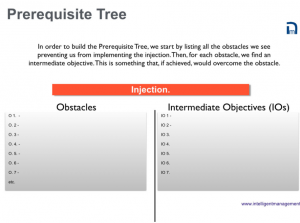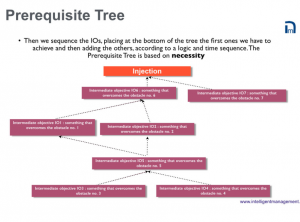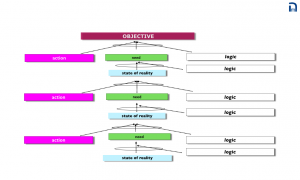New technological platforms are emerging almost daily to allow people to come together and collaborate. This should be good news because every human activity aimed at producing a result requires collaboration.
Even more good news is that this is very healthy in evolutionary terms: collaboration is more effective than competition. The very success of our species depends on it.
It would be misleading to suggest that just by connecting people who are like-minded we actually create change in reality. Movements can emerge but they may not necessarily achieve the changes they desire. We’ve seen examples in recent years like the Occupy Wall Street Movement. OWS was undoubtedly successful in drawing attention to Wall Street greed and raging inequality. However, following the election of Donald Trump the 2010 Dodd-Frank Wall Street Reform Act designed to avoid a repeat of Wall Street abuses is now at risk of repeal.
When good intentions are not enough
Technology for collaboration needs to be informed by the right knowledge. In other words, enabling people to come together, no matter how powerful the technology of any given platform, is not enough. What is required is organized collaboration towards a well-identified and agreed-upon goal and that requires up-front thinking and planning. This has to be followed by synchronization of the tasks required to make the change happen. Without these steps our good intentions are likely to remain just that. In other words, a network, in order to achieve something, needs to be oriented towards a goal, not just connected. (See How to Build Sustainable Network Wealth).
Thinking for change
Creating real change requires the desire to do so but also a method. We can find this in the Theory of Constraints. What exactly is the goal of the collaboration? That may seem an obvious place to start, but the precise verbalization of a goal requires considerable thought and effort. Once the goal is clear and agreed upon, the next concrete step is to identify all the obstacles standing in the way of the current situation and achieving the goal. Sounds negative, but in fact it’s a very good place to start because it clears the path to identifying the ‘intermediate objectives’ that overcome those obstacles. These intermediate objectives can then be sequenced according to which ones are prerequisites for others (or can be achieved in parallel). This sequencing provides the roadmap for all to see. In the Theory of Constraints this process is referred to as a Prerequisite Tree.
These roadmaps shows us the macro steps towards the goal but they need to be further articulated into actual steps or tasks. However, for collaboration to be effective, it’s not enough just to know what the tasks are. We also need to share the why, or the logic for those tasks. A Transition Tree connects the tasks to achieve an Intermediate Objective together in a sequential way by making explicit the starting situation, the need that situation generates and why, the task to satisfy that need and the reason for doing that task. This process is key to productive collaboration because it allows all the people involved to articulate and communicate not just the tasks to be done but also the logic for performing them and the result of the action. This creates clarity and transparency.
Effective collaboration is an operational process
Based on the above we can describe an operational process for collaboration as follows:
Identifying:
- a goal
- the obstacles to the goal
- the macro tasks that overcome those obstacles (Intermediate Objectives)
- the sequence the tasks must be carried out dependent on which tasks are prerequisites for others (Prerequisite Tree)
- the individual tasks within those macro steps
- the needs satisfied by those tasks and the logic for carrying them out (Transition Tree)
- who will carry out the tasks and when
Technology can certainly be designed to support all of this but it cannot replace the actual thought process required upstream of any actions.
Making people accountable
Effective collaboration for change also requires accountability. When precise tasks are identified then we need people with the competencies required to carry out those tasks. Knowing precisely who will carry out the tasks and when creates accountability. It is also at the heart of effective Project Management (see Critical Chain). Indeed, we can radically redesign entire organizations based on collaborative work as a Network of Projects.
The time is now
Biology and nature teach us fascinating things about how things are developing over time. The problem is that evolutionary adaptive changes take place over very long periods of time. There are urgent issues today that require our attention and intelligent collaborative action right now. We can’t afford to wait for solutions to emerge by themselves, nor do we need to. We have the knowledge, the method and intelligent technology that supports systemically thought-through actions can certainly help.
Sign up to our blog here and shift your thinking towards broader, systemic possibilities for yourself and your organization. Intelligent Management provides education and training on W. Edwards Deming’s management philosophy and the Theory of Constraints (Decalogue methodology) in North America and Europe.
About the Author
Angela Montgomery Ph.D. is Partner and Co-founder of Intelligent Management and author of the business novel+ website The Human Constraint . This downloadable novel uses narrative to look at how the Deming approach and the Theory of Constraints can create the organization of the future, based on collaboration, network and social innovation. She is co-author with Dr. Domenico Lepore, founder, and Dr. Giovanni Siepe of ‘Quality, Involvement, Flow: The Systemic Organization’ from CRC Press, New York.









Leave a Reply